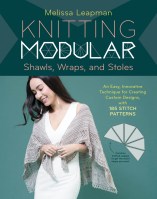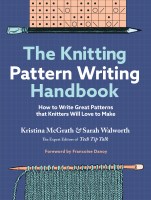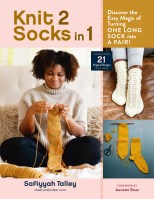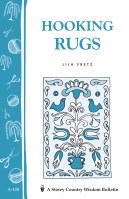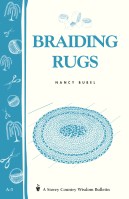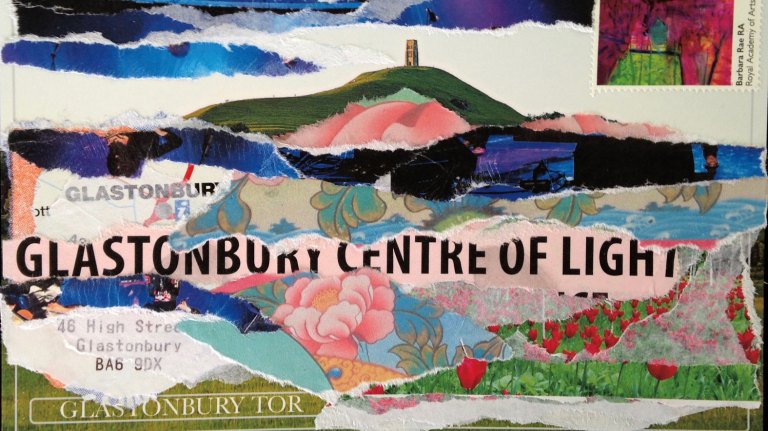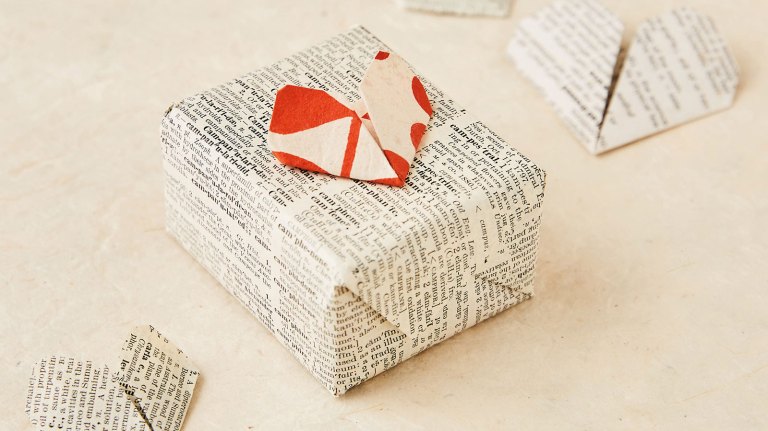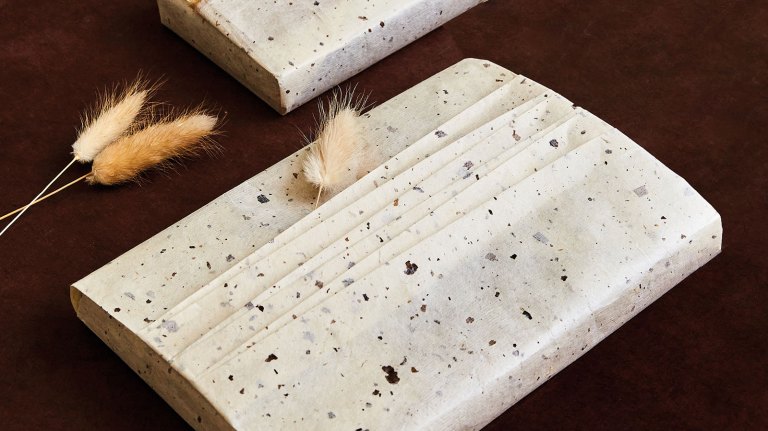A Knitting Fabric Rugs Q&A with Karen Tiede
Author, knitter, and rug-maker Karen Tiede talks about the art of turning thrift store fabric into stunning home decor.
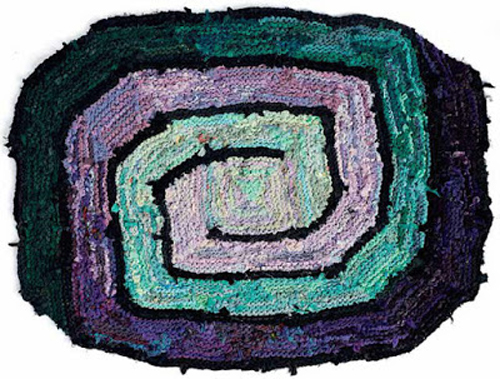
Knitting Fabric Rugs, Karen Tiede’s new book, shows crafters of every level how to create striking floor coverings and wall hangings from upcycled fabric, using large needles and a simple knit stitch. A lifelong knitter, Karen was drawn to cloth rugs by the economical and creative rewards of using repurposed materials and the challenge of endless color and motif possibilities. As she reveals here, the creative process that spawned the 28 vibrant patterns featured in her book have their roots in both practical and unexpected places . — Emily Spiegelman, Digital Features Editor
One of the perks of knitting fabric rugs is that it’s a great way to give old materials new life. Are there any special considerations or tips you have for people who are looking to build their fabric stash?
If you start by using old clothing, the key questions to ask are, “How many seams does it have?” and “Does the fabric have good color on both sides?” You want clothing sewn with a few pieces rather than with lots of fancy seams. T-shirts, polo shirts, and larger clothing, as well as yard goods, work well. Trousers are great sources of fabric, but be sure to avoid cutting through zippers, which will destroy rolling cutter blades. Also, if you use jeans, know that denim is hard on your hands and stains wood needles.
Look for the unpopular, boring colors (in my world, this is khaki), because they make great blenders. For instance, rugs made with any of the colors that are used in trousers tend to be easy to live with. Yarn-dyed fabrics, rather than printed fabrics, are the easiest to use because both right and wrong sides have color. Upholstery fabric can be easy to find, but, unfortunately, it rarely has good color on both sides. Old sheets give yards of fiber in the same color, and they can be useful when you’re integrating a set of rugs in a coordinating colorway. Lots of home sewers have boxes of leftovers they may be willing to donate to your effort.
Wash fabrics before cutting them into strips, and flatten them as soon as they are dry so they will be easy to cut.
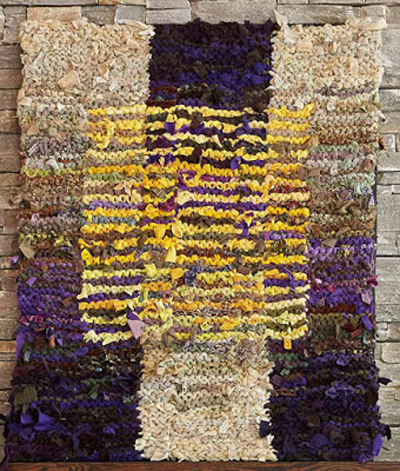
You mention in your book that pain in your hands presented constraints that actually shaped your creative process. I’m curious about how you adapted your process to ease discomfort and how those adaptations were especially suited to knitting fabric rugs.
I type-and-mouse for my day job, so I can’t afford any more arthritis than I have already signed up for. I’ve learned to avoid problems in several different ways. I knit small sections that I join later, so I don’t need to manage a large number of stitches on my needles at once. Also, I work my designs in garter stitch, which uses the knit stitch on both sides. While I love intarsia, Fair Isle, and other interchanging color patterns that are knit in stockinette stitch (knit on the right side, purl on the wrong side), I simply can’t purl for any length of time at the gauge I get knitting with fabric strips (2 stitches per inch). It hurts the muscles in my dominant hand. However, garter stitch actually makes a great rug because the resulting work is thicker than many other stitch patterns.
On the down side, fabric worked in garter stitch has a “right side” and a “wrong side.” When you change colors, a dotted line will show on the other (wrong) side of your project, which you don’t want when you’re trying to work well-defined color changes. So that forced some design limitations on me. It is enormously irritating to have to rip back because those “garter dots” turned up on the right side. Ripping back is why knitting is good for your character. I have completed, and sold, a few rugs that had garter dots on both sides before I learned to pay better attention.
When I first went to quilting books as design inspiration, I used basic patchwork designs with straight lines and big pieces. I could see how to create the blocks of color in garter stitch, with increase / decrease shaping. This worked well until one holiday show when I looked at all my work on display (in a private airline hanger, incidentally, so I could get a good view of it all at the same time), and I said to myself, “Done. Finished.” I realized I’d worked that idea to completion and it was time for something new.
In your book, you address the impact of quilt design on your fabric rugs. Can you talk a little more about that relationship?
It took a few months, but “something new” turned out to be getting inspired by art quilts. Floating Gold Square came from a picture in a book of art quilts. I loved the shading that the quilter was able to create, and I thought, “I wonder if I can do that…” Nancy Crow’s work was also an inspiration. Unfortunately, creating significant curves like those in some art quilts requires a lot of following charts and counting stitches, and that’s not fun for me to knit. There’s a lot more room for development in the ideas that make up a rug like Pink and Green Ladders, which is also in the book.
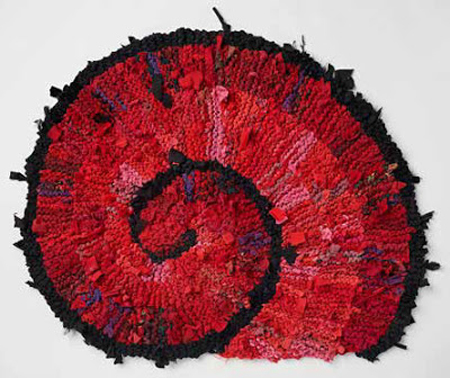
Anyone who visits your website may stumble across your passion for hula hooping. So I have to ask: is there any overlap between these two loves of yours?
Not everyone recognizes that the path of a hoop is actually a spiral, not a circle. (Put a contrasting dot on a hoop and watch. When you spend an hour a day inside a hoop (my current exercise routine), you think about spirals a lot. I have said that I saw the idea for the first spiral rug in Kay Gardiner and Ann Meador Shayne’s Mason Dixon Knitting. From that seed, the triple arm spiral, the Triskele (triple), and the nautilus rugs took shape. I would do more — they are very easy to knit, and for the most part, solve the problem of garter dots when changing colors.

